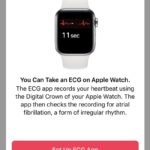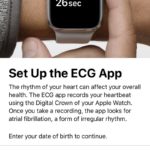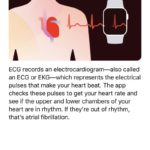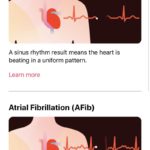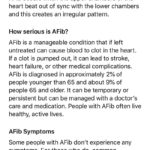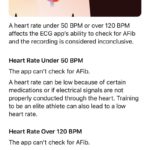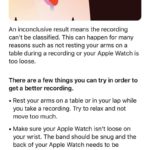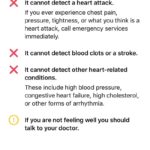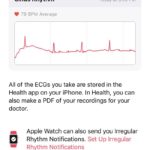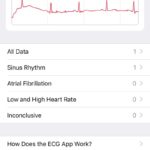Apple is making its electrocardiogram reading feature available to Apple Watch Series 4 owners. It’s also releasing an irregular rate notification feature that will be available on Apple Watches going back to Series 1. Both are a part of watchOS 5.1.2.
When the Apple Watch Series 4 was announced this past September, the most significant new hardware feature besides the larger screen was probably the ability to take an EKG directly on the Watch. And while the electrodes on the digital crown and the backside of the Watch were there, the software to support them hadn’t been released. Now it’s here; in the US at least. To take an EKG using the watch, you must rest your finger on the digital crown for 30 seconds, before you are greeted with a result that you can look at yourself or email to your doctor.
According to Wikipedia, an “Electrocardiography (ECG or EKG) is the process of recording the electrical activity of the heart over a period of time using electrodes placed over the skin. These electrodes detect the tiny electrical changes on the skin that arise from the heart muscle’s electrophysiologic pattern of depolarizing and repolarizing during each heartbeat. It is very commonly performed to detect any cardiac problems.
In a conventional 12-lead ECG, ten electrodes are placed on the patient’s limbs and on the surface of the chest. The overall magnitude of the heart’s electrical potential is then measured from twelve different angles (“leads”) and is recorded over a period of time (usually ten seconds). In this way, the overall magnitude and direction of the heart’s electrical depolarization is captured at each moment throughout the cardiac cycle. The graph of voltage versus time produced by this noninvasive medical procedure is an electrocardiogram.
There are three main components to an ECG: the P wave, which represents the depolarization of the atria; the QRS complex, which represents the depolarization of the ventricles; and the T wave, which represents the repolarization of the ventricles. It can also be further broken down into the following:
O is the origin or datum point preceding the cycle
P is the atrial systole contraction pulse
Q is a downward deflection immediately preceding the ventricular contraction
R is the peak of the ventricular contraction
S is the downward deflection immediately after the ventricular contraction
T is the recovery of the ventricles
U is the successor of the T wave but it is small and not always observed”

ECGKG of a normal heart sinus rhythm.
In the case of the Series 4 Apple Watch, the electrodes that perform the reading are located on the digital crown.
Apple says that having a potential EKG monitor on your wrist at all times means that you can get a reading at the moment you’re feeling your heart race, for example, instead of just describing it to your doctor later. But the risk is that people might not use that data properly (e.g., they might use it for self-diagnosis).
Both features are limited to the US for now, and they are available as part of the watchOS 5.1.2 update.
